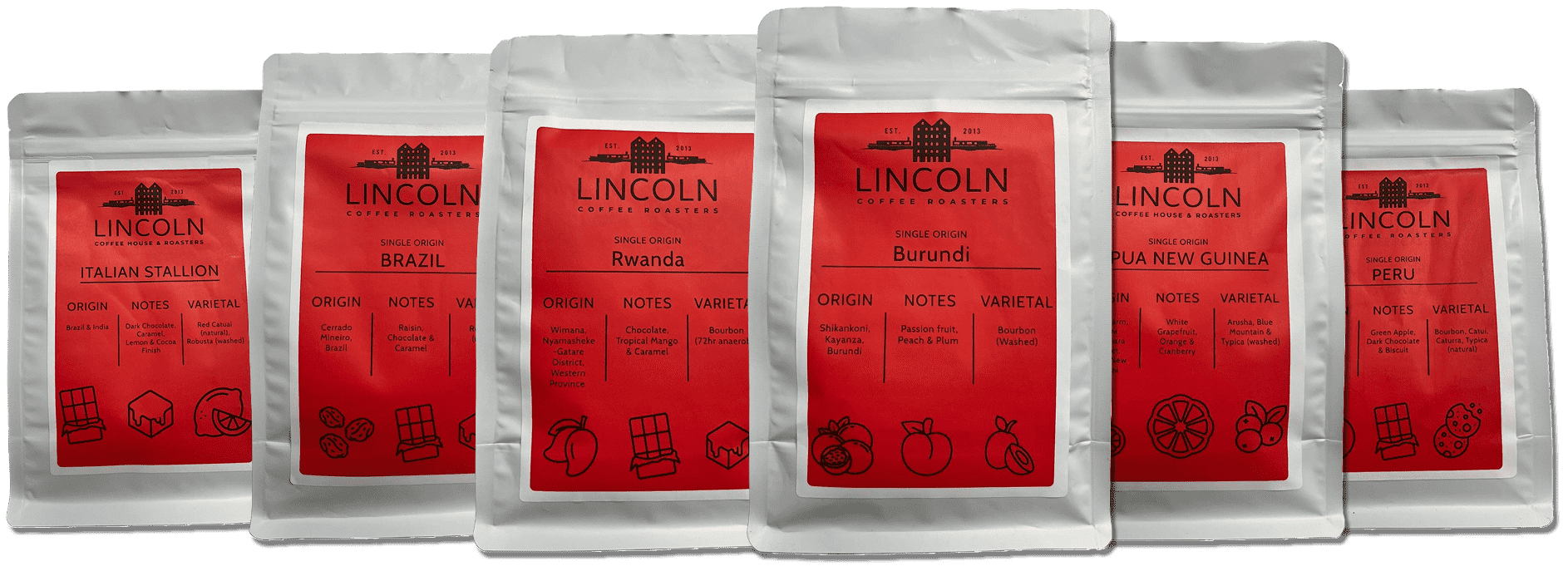Different Types of Coffee Processing in Specialty Coffee

There are various ways coffee is processed after it’s been harvested. Even before the roasting process begins, coffee is treated using a range of traditional and contemporary methods.
You’ll often see washed, natural and honey processes in the specialty coffee scene — and increasingly, anaerobic and experimental techniques. But what do they actually mean?
This guide provides a comprehensive outline of both traditional and innovative coffee processing methods.
Traditional Processing Methods
Washed (Wet) Process
The coffee cherry’s skin and pulp are removed first, then the beans are fermented in water tanks to remove mucilage before drying. This method highlights the bean’s inherent flavours, often resulting in clean, bright cups.
Natural (Dry) Process
The whole cherry (skin, pulp, mucilage) is dried intact on raised beds or patios, then hulled to extract the beans. This process imparts fruity, sweet, and wine-like flavours due to prolonged contact with the fruit.
Honey Process
A hybrid method where the skin and pulp are removed but some mucilage remains during drying. Variations include yellow, red, and black honey, depending on fermentation length. This influences sweetness and body, balancing the clean notes of washed coffees with fruity sweetness.
Wet Hulled (Semi-Washed) Process
Common in Indonesia, this method removes the pulp and ferments the beans, but the parchment layer is removed before the bean fully dries. It produces earthy, smoky flavours with lower acidity.
Experimental and Innovative Processing
Anaerobic Fermentation
Coffee cherries or depulped beans are sealed in oxygen-free environments (often water-filled barrels) for 48–72 hours or more. This method produces exotic, intense flavours such as tropical fruits and spices, distinct from traditional aerobic fermentation.
Fruit-Infused Anaerobic Fermentation
An avant-garde technique where coffee cherries or beans are fermented together with fresh or dehydrated fruits (e.g., berries, pineapple, citrus) and sometimes wine yeast or herbs in anaerobic conditions. The microbes feed on sugars from both coffee and fruit, producing esters — flavour compounds that enhance fruity, floral, and spicy notes naturally, without added flavouring.
- For example, our Rwanda coffee has been fermented using cherries for 72 hours.
- Another approach involves dry anaerobic fermentation with dehydrated fruits, which boosts ester production, enriching the coffee’s aroma and taste with natural fruitiness.
Other Experimental Techniques
These include carbonic maceration and lactic fermentation, both of which add layers of complexity and unique sensory experiences. They’re pushing the boundaries of what specialty coffee can taste like.
Final Thoughts
This evolving landscape of coffee processing blends tradition with innovation, allowing producers to craft coffees with unique and complex flavour profiles that appeal to adventurous coffee lovers. Experimental processes like anaerobic fruit infusion are redefining what specialty coffee can be — offering vibrant, floral, and fruit-toned cups that showcase the creativity and craftsmanship behind each bean.
Check out our selection of coffees from around the world here.
Sources
- https://www.wearecoffeeco.com/blogs/news/coffee-processing-methods
- https://www.fratellocoffee.com/blogs/blog/coffee-processing-methods-explained
- https://www.origincoffee.co.uk/blogs/journal/whats-coffee-processing
- https://www.iocoffee.vn/post/exploring-emerging-trends-in-innovative-coffee-processing
- https://www.rossocoffeeroasters.com/blogs/rosso-journal/experimental-processing-techniques-infused-coffees
- https://volcanocoffeeworks.com/blogs/journal/how-are-fruit-infusion-coffees-made
- https://www.linkedin.com/pulse/experimental-coffee-processing-gives-rise-abel-ndeda-vrybf
- https://origamidripper.au/blogs/news/anaerobic-fermentation
- https://torque.coffee/blogs/brew-guides/a-gentle-dive-into-the-science-of-anaerobic-coffee-processing
- https://www.coffeedesk.com/blog/modern-methods-of-specialty-coffee-processing/
- https://perfectdailygrind.com/2016/07/washed-natural-honey-coffee-processing-101/
- https://uk.covoyacoffee.com/curated/experimental-anaerobic.html
- https://bruvi.com/blogs/articles/experimental-coffee-processing-anaerobic-fermentation
- https://greencoffeecollective.com/collections/experimental
- https://www.allpressespresso.com/community/coffee-processing-methods-natural-washed-or-honey/
- https://www.pactcoffee.com/farms/cherry-processing-methods
- https://espressocoffeeguide.com/all-about-coffee-2/coffee-processing/
- https://www.coffees.gr/coffee-processes-unsual/?sl=en
- https://routescoffee.co.uk/modern-coffee-processing-methods/



.jpg)